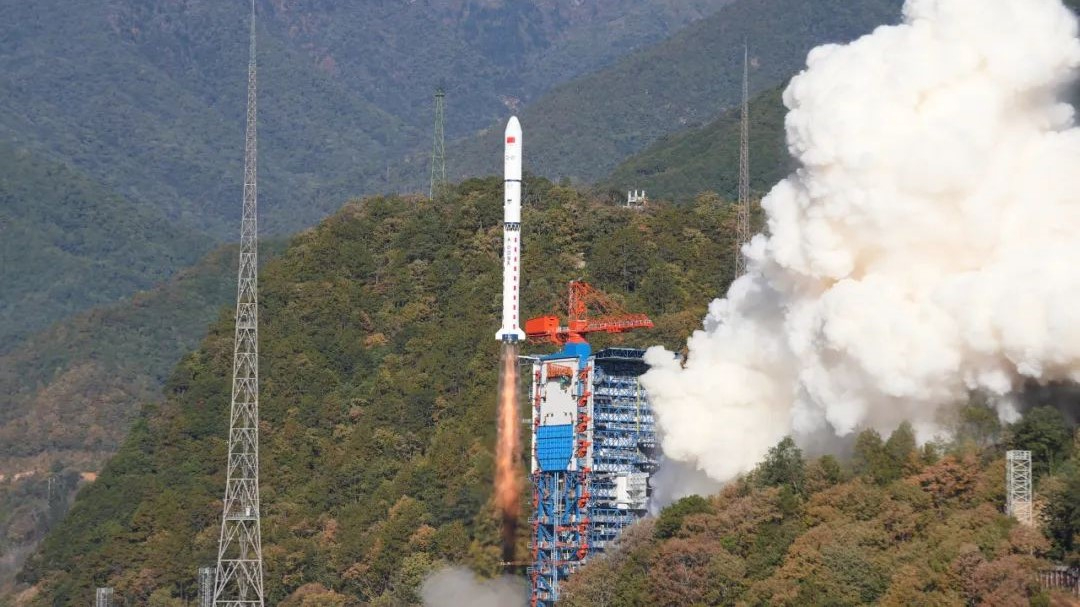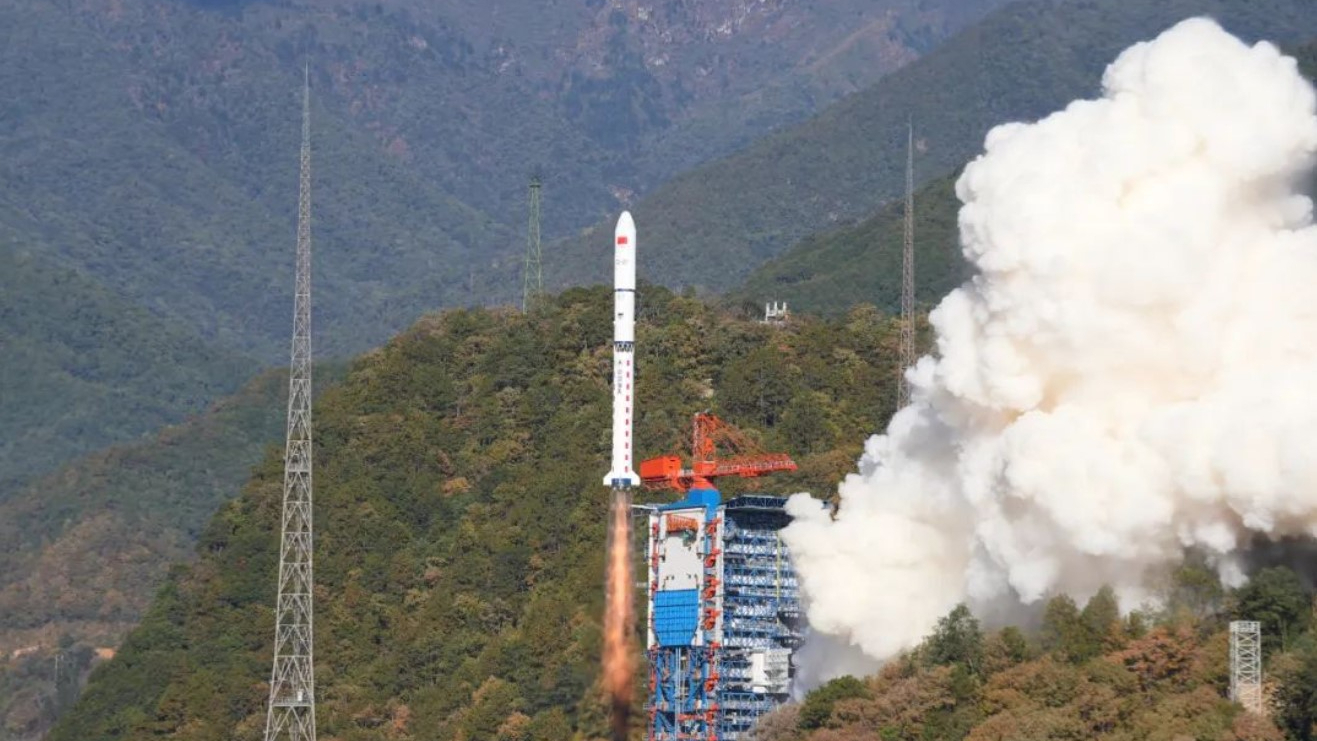
China launched a new trio of reconnaissance satellites over the weekend on a mission that also marked the 500th Long March rocket launch.
A Long March 2D rocket lifted off from Xichang Satellite Launch Center at 8:58 p.m. EST on Dec. 9 (0158 GMT, or 9:58 a.m. Beijing time, Dec. 10). The rocket rose into blue skies above the hills surrounding the spaceport, trailing a purple and orange exhaust plume produced by its hypergolic propellant mix.
Aboard were a fifth group of three Yaogan-39 satellites. Like previous Yaogan-39 launches, the trio of spacecraft entered orbits with an altitude of roughly 307 miles (495 kilometers) and inclined by 35 degrees.
Related: China launches remote-sensing satellite for Egypt (video)

Little is publicly known about the Yaogan satellites. They are generally described by Chinese state media and space authorities as remote sensing satellites tasked with observing, surveying and measuring objects on land or at sea, as well as monitoring weather.
Western observers believe Yaogan satellites to be for at least partly military purposes. The wider series includes optical, radar and electronic intelligence gathering satellites.
CelesTrak has GP data for 5 objects from the launch (2023-194) of a Yaogan-39 triplet atop a Long March-2D rocket from Xichang Satellite Launch Center on Dec 10 at 0158 UTC: https://t.co/QC9KWc0biX. Data for the launch can be found at: https://t.co/bMxLL9Yoj0. pic.twitter.com/v6SEX9CroADecember 10, 2023
The Yaogan-39 (05) satellites were manufactured by the Shanghai Academy of Spaceflight Technology (SAST) and the China Academy of Space Technology (CAST) in Beijing. Both belong to the China Aerospace Science and Technology Corporation (CASC), the country’s state-owned main space contractor.
The launch was the milestone 500th launch of China's Long March rocket series. The first took place in 1970.
SAST produced 203 of the 500 Long March rockets, with the China Academy of Launch Vehicle Technology (CALT) accounting for 297 launches, according to China Daily.
Launch statistics compiled by Wikipedia state that 482 of the 500 Long March launches have been fully successful, with 10 failures and eight partial failures. This puts the cumulative success rate at 96.4%.
The most recent Long March failure occurred in April 2020, when the Palapa-N1 satellite was lost on a Long March 3B launch. More than 150 consecutive successful launches with the vehicles have been conducted since.
CASC is currently developing a huge new Long March 9 rocket, as well as the Long March 10, which is designed to send a pair of astronauts to the moon.
The Yaogan-39 (05) mission was China’s 59th orbital launch of 2023. Around three-quarters of these have been Long March launches, with commercial launch providers accounting for the rest.







